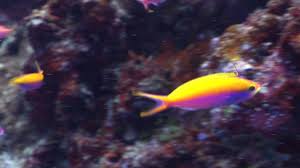The Connection Between Dragons and Natural Elements in Chinese Culture

In Chinese culture, the dragon is not merely a mythical creature; it is a symbol deeply intertwined with the natural world. Revered for its mystical qualities, strength, and wisdom, the dragon represents a powerful bridge between humans and the forces of nature. Its association with the five elements — wood, fire, earth, metal, and water — plays a crucial role in Chinese cosmology, philosophy, and Feng Shui practices. The dragon’s connection to these elements highlights its significance in Chinese culture as a symbol of harmony, balance, and transformation.
The Dragon and the Five Elements
The five elements theory, a core principle in traditional Chinese philosophy, asserts that all natural phenomena are made up of five essential energies that interact with one another. These elements — wood, fire, earth, metal, and water — are constantly in flux, creating cycles of creation, destruction, and transformation. The dragon, as a powerful and multi-faceted symbol, is often linked to these elements in various ways:
- Wood: The dragon is often connected to wood due to its association with growth, vitality, and strength. Wood represents the spring season, renewal, and the power of life force. The dragon’s ability to soar and grow symbolizes the expansive energy of wood. In ancient myths, the dragon is believed to bring life and prosperity, much like the force of nature that fuels growth and regeneration in the natural world.
- Fire: Dragons are also closely tied to fire, embodying the destructive yet transformative nature of this element. Fire represents summer, passion, and energy, all qualities that the dragon is said to possess. In Chinese mythology, the dragon’s fiery breath is symbolic of its power to destroy obstacles and renew life. Fire, as an element, has the ability to purge negativity and transform situations, much like the dragon’s capacity to clear the way for new beginnings.
- Earth: The dragon’s connection to earth is seen through its role as a guardian and protector. The earth element is associated with stability, grounding, and nourishment. In traditional Chinese culture, the dragon is often depicted as living within or beneath the earth, signifying its relationship to the natural world’s foundation. As a symbol of prosperity, the dragon is believed to bring wealth and good fortune through its connection to the earth’s fertile energy, ensuring a constant cycle of abundance and growth.
- Metal: The metal element is linked to the dragon’s strength and resilience. Metal represents autumn, clarity, and precision, qualities that the dragon embodies through its sharp intellect and ability to navigate complex situations. In Chinese folklore, the dragon is sometimes depicted with metallic scales or other attributes that highlight its connection to the strength and clarity associated with metal. The dragon’s mastery over the physical and spiritual realms also reflects the solid, structured nature of metal.
- Water: Of all the elements, water is perhaps the most prominent in its connection with the dragon. Water is seen as the source of life, prosperity, and abundance. The dragon’s affinity with water is reflected in many myths, where it is said to reside in rivers, lakes, or oceans. Water is symbolic of wisdom and adaptability, qualities that the dragon represents in Chinese culture. The dragon’s control over water — particularly in its role as a rain-bringer — underscores its role as a harbinger of good fortune, renewal, and balance.
The Dragon’s Role in Weather and Nature
In Chinese culture, the dragon’s connection to the natural elements extends beyond the theoretical. It is also deeply embedded in the observation of the natural world, particularly in the realm of weather and climate. The dragon is often portrayed as a creature that controls the forces of nature, particularly rain and storms.
- Rain and Agriculture: The dragon is particularly associated with rain, a vital force for sustaining life and agriculture. In ancient China, where agriculture was the backbone of society, the dragon was believed to bring rain to nourish crops. It was often said that the dragon’s ability to summon rain made it an essential figure in the agricultural cycle. Festivals, rituals, and offerings were dedicated to the dragon, hoping to ensure good weather and bountiful harvests. The dragon’s control over rain symbolizes its power over the natural world, maintaining harmony between humans and nature.
- Storms and Transformation: While the dragon is a symbol of prosperity and balance, it is also linked to storms, a manifestation of its raw power. Storms are seen as a natural force that cleanses the world, much like fire, and allows for renewal. In this sense, the dragon represents both destruction and creation, as it brings storms that wash away the old to make way for the new. The dragon’s connection to storms underscores its role as a force of change and transformation in nature.
The Dragon in Chinese Art and Architecture
In Chinese art and architecture, the dragon is frequently depicted in ways that symbolize its connection to the natural elements. Whether carved into the stone of ancient temples, painted on the walls of royal palaces, or sculpted in gardens, the dragon often appears alongside symbols of nature, such as clouds, water, and mountains. These depictions emphasize the dragon’s role as a mediator between humans and the forces of nature.
- Dragon and Water Features: In traditional Chinese gardens, dragons are often integrated into water features, such as fountains or ponds. These water features are designed to reflect the harmony between the dragon and the natural world. In Feng Shui, it is believed that placing a dragon near water can enhance wealth and bring balance to the space.
- Mountains and the Dragon: The dragon is also associated with mountains, which are seen as a symbol of stability and endurance in Chinese culture. The dragon’s connection to mountains highlights its role as a powerful force that can scale great heights, move between realms, and bring balance to the earth.
Conclusion
In Chinese culture, the dragon is not just a mythical creature; it is a living symbol of the profound connection between humanity and the natural world. Its ties to the five elements — wood, fire, earth, metal, and water — illustrate its power to shape and transform the environment. Whether controlling the rain, bringing prosperity through agriculture, or symbolizing the cycles of life and death, the dragon’s influence extends across the natural world, guiding human beings toward harmony and balance. The dragon is a reminder that, in Chinese philosophy, humanity is intricately connected to nature, and through understanding and respecting the natural elements, one can achieve peace, prosperity, and spiritual growth.

